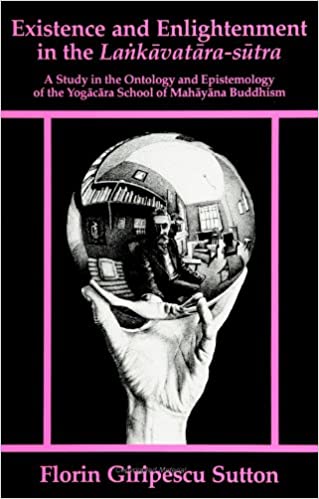- Forewordxiii
- Prefacexv
- 0.1. The Purpose of the Study, and the Significance of the
Laṅkāvatāra-sūtra within Buddhist Doctrinal History1 - 0.2. Dating the Text: Problems of Form and Interpretation13
- 0.3. Methodology and Outline of the Study23
- 1.0. The Nature of Buddhist Ontology39
- General considerations * The practical aim of the Yogācāra Philosophy
- 1.1. The Threefold Meaning of Tathāgata-garbha and its
Relation to Ālaya-vijñāna: the Essence of Being51 - Preliminary considerations * Tathagāta-garbha as essential, supramundane,
pure dharma, and its contrast with the Hindu Ātman * Tathagata-garbha
as embryo, and the dynamics of Buddhahood * Tathāgata-garbha
as womb or matrix of Buddhahood * Conclusion - 1.2. The Five Skandhas: the Temporal Manifestation of Being79
Introduction * Brief overview of the Ātman controversy prior to the
Laṅkāvatāra-sūtra * Rūpa, or the formative elements of the five Skandhas
* Nāma, or the formless elements of the five Skandhas * The Skandhas and
the empirical self, or personality * The Skandhas and the trans-empirical
Self, the Tathāgata * The five Skandhas and the denial of metaphysical
dualities * Concluding remarks on the notion of Self and its varieties - 1.3. Dharmadhātu: the Spatial or Cosmic Dimension of Being117
Introductory remarks * Dharmādhatu as cosmic Law: the fundamental
structure of the universe * Dharmādhatu as universal Void: the ground
of Being * Concluding observations
- 2.0. Buddhist Epistemology, Buddhist Dialectics135
Truth, untruth, half-truth, "the truth" * The tetralemma logic: a thousand
years of Buddhist dialectics * The early use of the tetralemma in the
Pāli canon * Rationality and irrationality in Nāgārjuna's relativistic logic
* Epistemology in the Laṅkāvatāra-sūtra: a radical critique of language,
logic, and knowledge * Conclusions and preview of part two - 2.1. The Epistemological Reduction of the Citta-mātra (Mind-only) Doctrine169
- Preliminary considerations * Citta as the empirical mind
* Citta as the transcendental Mind * Citta-mātra as explanation for the
triple world (Tribhava) * Concluding words and the connection between
Laṅkāvatāra and Zen
- 2.2. From Mind to No-mind: the Transcendental Leap beyond Empirical
Cognition209
* Introduction * The five Dharmas or epistemic categories * The three
Svabhāvas or modes of cognition * The attainment of Āryajñāna:
transcendental Wisdom or Gnosis * Concluding remarks - 2.3. The Conjunctive System of the Eight Vijñānas: the Integration of Both Mind
and No-mind States of Consciousness237
* Introductory remarks * Jñāna and Vijñāna: abstract intuition versus
concrete knowledge * Khyāti- and Vastuprativikalpa-vijñāna:
the perceptual and the object discriminating knowledge * The inner
revolution (Parāvṛtti): the return to the tranquil state of
pure consciousness (Ālaya-vijñāna) * Conclusion - 2.4. The Disjunctive Theory of Causation: Things are Neither this, Nor that,
for They Are All Subject to Causes and Conditions (Hetu-pratyaya)261
* Introduction * The expansion of the relevance of causation: from the
psychological to the cosmic-philosophical principle * Causation as a
possible theoretical basis for a monistic view of the world * Causation as a
teaching device * Excursus: highlighting Nāgārjuna's thought in respect to
causation * The soteriological value of the theory of causation
* Concluding observations
- 3.0. Final Overview287
- Appendix295
- Notes323
- Bibliography357
- Index365


